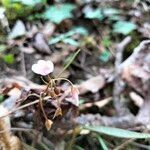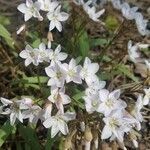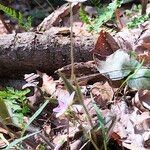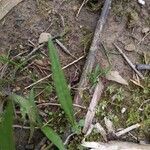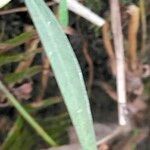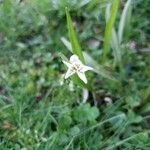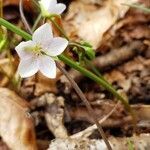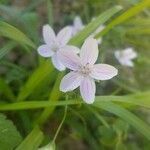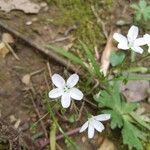Plants perennial, with globose tubers 10-200 mm diam.; periderm 0-0.5 mm. Stems 5-40 cm. Leaves: basal leaves petiolate 6-20 cm, blade linear, 3-14 × 0.5-1.3 cm; cauline leaves sessile, blade linear, 1-10 cm, tapered to slender base. Inflorescences 1-bracteate, rarely with 2 or more bracts; bracts reduced apically, scalelike. Flowers 5-12 mm diam.; sepals 5-7 mm; petals white to pinkish or rose (rarely yellow or orange) or white with pink-lavender candy-stripes, 7-14 mm; ovules 6. Seeds 2-3 mm diam., shiny and smooth; elaisome 1-2 mm. 2n = 12-190.
A small erect, slender plant. It grows 20-30 cm high and spreads 30 cm wide. It has large thick round tubers. These can be 3-5 cm across. The leaves are simple and narrow and widest about the middle. They are 5-15 cm long by 1-3 cm wide. The flowers are pink in loose clusters. They have 5 petals and are 1-3 cm across. They have dark pink veins. The fruit are egg shaped capsules. They are 8-13 mm long.
